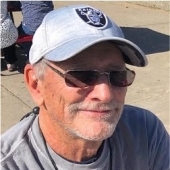
Increasing farm yield: co-culturing of two kelp species
Michael Stekoll, Professor Emeritus, University of Alaska Fairbanks, University of Alaska Southeast, USA

Increasing farm yield: co-culturing of two kelp species
Michael Stekoll, Professor Emeritus, University of Alaska Fairbanks, University of Alaska Southeast, USA
About speaker:
Michael Stekoll is an Emeritus Professor of Chemistry and Biochemistry at the University of Alaska Southeast and the College of Fisheries and Ocean Sciences, University of Alaska Fairbanks. He received a BS in chemistry from Stanford and a PhD in biochemistry from UCLA. He has spent the last 40+ years in Alaska teaching university classes in chemistry, organic chemistry, biochemistry, aquatic pollution and phycology. His research interests have focused on two major areas: aquatic pollution effects on fish, invertebrates and marine algae (seaweeds) and research on the mariculture of seaweeds.
Company:
The UAF College of Fisheries and Ocean Sciences maintains the CFOS Lena Point Facility in Juneau, Alaska. The faculty, students and staff at Lena carry out a variety of research programs in fisheries, marine biology and mariculture.
Presentation:
Very large kelp farms can be expensive to build and maintain, leading to the need to optimize the biomass per unit area. Although close spacing of growlines can lead to poor growth, this may be an approach if two species of kelps are grown: one that hangs down and one that is buoyant, growing up. We undertook a preliminary trial in Kodiak, Alaska that grew both sugar kelp and bull kelp in the same longline array. Three treatments were employed: 1) nine lines in an array were seeded with sugar kelp (sugar kelp only) 2) nine lines were seeded with bull kelp (bull kelp only), and 3) five lines were seeded with bull kelp alternating with four lines of sugar kelp (combined). The combined arrays had statistically greater yields than both the bull kelp only and sugar kelp only arrays, while there was no statistical significance between the single species arrays.